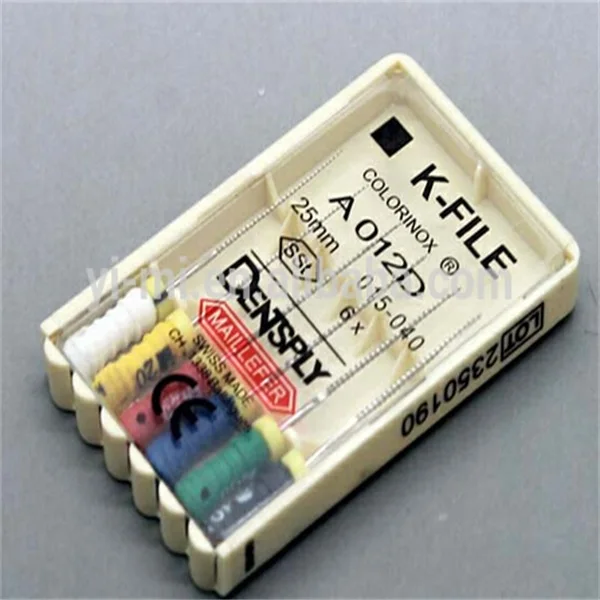

In 1955, Ingle called for the standardization of endodontic instruments, and he officially proposed the idea at the Second Conference of Endodontics held in Philadelphia in 1958. However, each company had its own way of producing the instruments, and there was no correlation between the different brands. For years, files and reamers were manufactured in carbon steel and numbered from one to six, where each consecutive number was bigger than the preceding one. A third type of root canal instrument is the H‐file, shaped like a wood screw and developed in 1940 by the Swedish company Sendoline in collaboration with the Swedish doctor Gustav Hedström. But in 1904, Kerr Manufacturing Company (Romulus, MI) manufactured what can be considered the first true endodontic instruments: the K‐type files (K‐files) and K‐type reamers (K‐reamers). Passive radial lands, fixed tapers, single cross‐sectionĪctive cutting tips, variable tapers, alternating cutting edgesĢrd generation thermal treatment: CM (Coltene), Blue/Gold (Dentsply)įrom the second half of the nineteenth century, coarse instruments were created from piano wires in order to allow the removal of tissue remnants from the root canals. Kerr’s development of the first endodontic instruments Table 4.2 Timeline of the development of different generations of root canal shaping instruments. GroupĮngine‐driven – adapting to canal anatomy
Edge endo rotary files price iso#
Table 4.1 Classification of shaping and cleaning instruments, based on ISO 3630‐5. Table 4.1 shows a classification of shaping instruments based on ISO 3630‐5, whilst Table 4.2 provides a timeline of the key dates in their development. This chapter restricts itself to root canal shaping instruments and concepts. The main problem encountered during shaping is the production of dentine debris, potentially leading to procedural mishaps. Dedicated endodontic instruments have been manufactured for this purpose. The aim of shaping is to create space for irrigant delivery in order to clean and disinfect the root canal system, and then for the placement of filling materials.

4.1.4.5 Group 5: Engine‐Driven Reciprocating Instruments.4.1.4.4 Group 4: Engine‐Driven Instruments that Adapt Themselves to the Root Canal Anatomy.4.1.4.3 Group 3: Engine‐Driven NiTi Rotary Instruments.4.1.4.2 Group 2: Engine‐Driven Latch‐Type Instruments.4.1.4.1 Group 1: Instruments for Hand Use (K‐Files, H‐Files, Barbed Broaches, Rasps).4.1.3.3 Physical Properties of Endodontic Instruments: Terms and Definitions.4.1.3.2 Design of Endodontic Instruments: Terms and Definitions.4.1.3.1 Standardization of Stainless‐Steel Instruments.4.1.2.1 Carbon Steel versus Stainless Steel.4.1 Classification and Components of Endodontic Instruments.


 0 kommentar(er)
0 kommentar(er)
